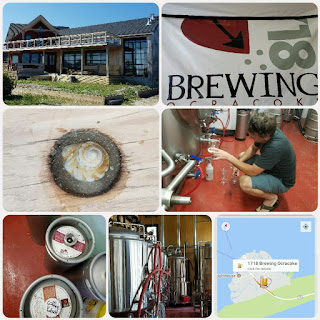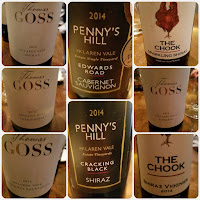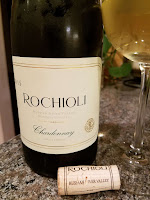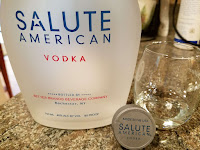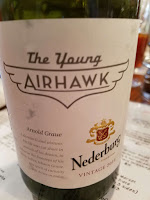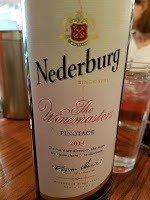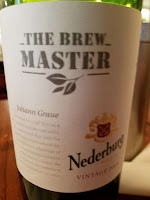The District of Columbia now hosts half a dozen distilleries, with all but one located in Northeast's Ivy City -- a warehouse district located between New York Avenue and West Virginia Avenue near Gallaudet University. DCs oldest and most well known distillery,
New Columbia Distillers, set up residency in Ivy City in 2011 where craft the popular Green Hat Gin. Unfortunately during my Sunday visit, they were closed as well as
One Eight Distilling. That was not the case for
Joseph A. Magnus & Co and
Republic Restoratives Distillery where I spent an afternoon sampling their spirits neat as well as in cocktails. The 5th distillery,
Cotton & Reed, is actually right outside Ivy City as shown on the map. Download
theCompass Craft Beverage Finder for exact locations.
 Joseph A. Magnus & Co
Joseph A. Magnus & Co is located next door and above
Atlas Brew Works so give yourself ample time to visit both. The distillery is based upon Jimmy Turner finding a hundred year old bourbon produced by his great grandfather Joseph A. Magnus. A new found interest in his family's distilling past led to a with to a partnership with "former
Woodford Reserve distiller and Whisky Advocate Lifetime Achievement Award winner Dave Scheurich, American Distilling Institute Director of Research and whiskey blending pro Nancy “The Nose” Fraley, former
Buffalo Trace Distillery VP and General Manager Richard Wolf, and Brett Thompson a co-owner of Alexandria’s Pork Barrel BBQ. (See this
City Paper article.) Along with The Gin Goddess, Nicole Hassoun, this team currently produces five spirits: one vodka, two gins, and two bourbons.

During my visit I sampled these five spirits neat and enjoyed one of the cocktails from their Kentucky Derby themed May menu.
Go For Gin brought back racing memories and is a tasty concoction of their Vigilant Gin, honey, lemon, and Rinomata - a new Italian aperitif from vermouth producer Giancarlo Mancino. Going neat, a tasting starts with the
Royal Seal Vodka ($29, 80 proof) made from 100% corn grown in Virginia and distilled seven times.
This spirit is very clean, smooth with a sweet texture that provides a
mellow finish. The distillery offers two gins, the
Vigilant Gin ($32, 84 proof) and Navy Strength Gin ($39, 114 proof), both infused with botanicals - a few grown in palettes strategically positioned in the sun facing tasting room. This first is a London-style Dry Gin that has a more citrus character and very mild; the second is a much stronger, 100% corn gin that grabs your attention but still remains smooth at the tail. Moving on, the two bourbons shined - although distilled and aged elsewhere the team created blends that are fantastic. The blend for the
Murray Hill Club Blended Bourbon ($92, 103 proof) attempts to replicate the pre-prohibition Magnus bourbon and combines 18 year bourbon, 11 year bourbon, and 9 year light whiskey. The result is a fresh and spicy whiskey with both baking spices and pepper. Finally, the
Joseph Magnus Straight Bourbon ($92, 100 proof) is a straight bourbon whiskey aged in white oak and finished in Oloroso Sherry, Pedro Ximénez and Cognac casks. This process provides multiple flavors, a complex whiskey alternating between vanilla, nuts, and fruit. All told, a great tasting lineup.
Moving on down road the one year old, woman owned
Republic Restoratives Distillery is located right on New York Avenue NE with an inviting open air tasting bar where they stress a facility is just as much a craft cocktail bar as a distillery. Co-founders Pia Carusone and Rachel Gardner hired Master Distiller, Rusty Figgins to focus on bourbon but also leverage the Ivy City Gin phenomena. But first there's the
Civic Vodka ($29, 80 proof), a corn-based vodka that is charcoal polished, a filtration process that provides a smooth and clean spirit. The
Borough Bourbon ($55, 88 proof) is a Kentucky born whiskey (sourced until their own whiskey is ready) but then finished at the distillery in Sauvignon Blanc barrique casks. The result is a very smooth whiskey, drinking neat nicely with a little vanilla. My favorite. Finally, the
Rodham Rye ($79, 90 proof) - guess who its named after - is sourced one-year-old rye and three-and-a-half-year-old rye from Tennessee. The distillery then cuts the whiskey to proof using Adirondack Mountain spring water from a maple syrup farm in upstate new York. The spicy rye expresses itself clearly, there's also a chewiness and long, complex finish. And enjoy a cocktail, mine was a concoction of honey, lime juice, and Borough Bourbon. Cheers.
 Tablas Creek Vineyard 2016 Patelin de Tablas Blanc ($27) is a blend of five white grape varieties (Grenache Blanc, Viognier, Roussanne, Marsanne and Clairette Blanche). The fruit was sourced from nine Paso Rhone vineyards, whole clustered pressed and fermented with native yeasts. This was the most mineral driven wine interspersed with creamy stone fruit and lemons. My favorite of the group.
Tablas Creek Vineyard 2016 Patelin de Tablas Blanc ($27) is a blend of five white grape varieties (Grenache Blanc, Viognier, Roussanne, Marsanne and Clairette Blanche). The fruit was sourced from nine Paso Rhone vineyards, whole clustered pressed and fermented with native yeasts. This was the most mineral driven wine interspersed with creamy stone fruit and lemons. My favorite of the group. 

